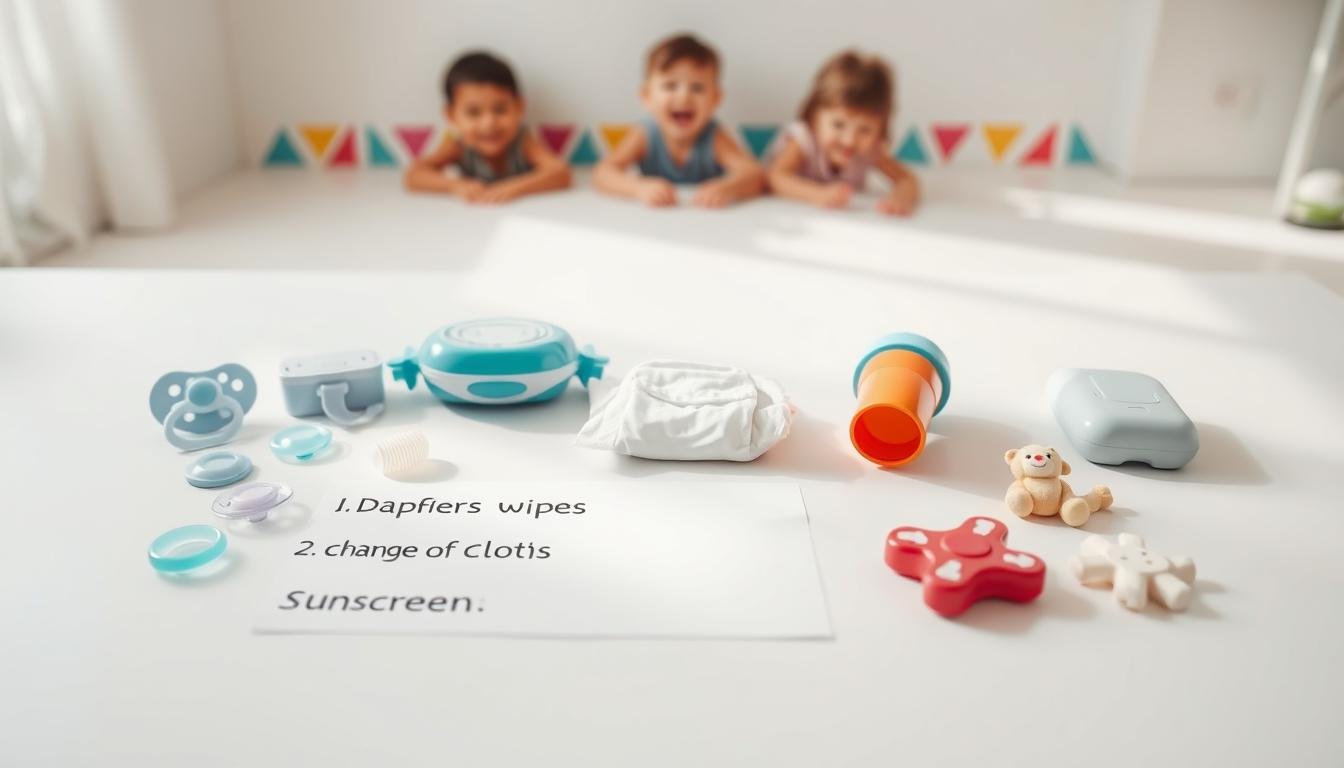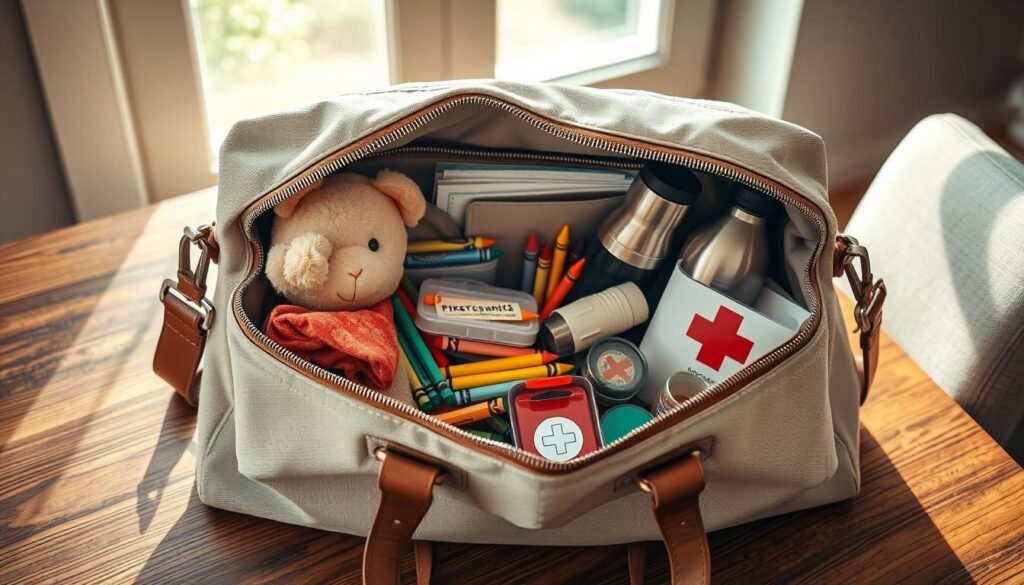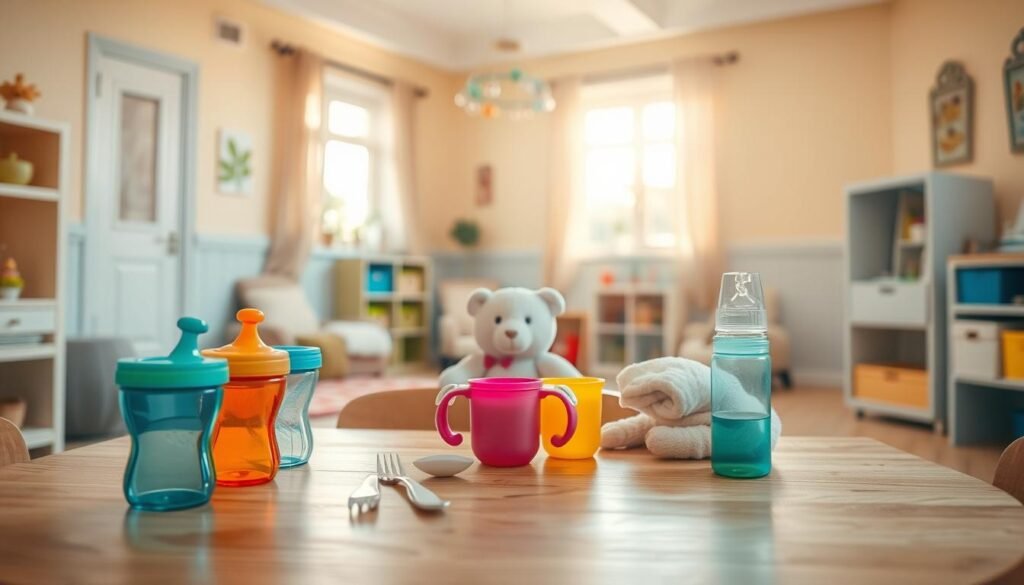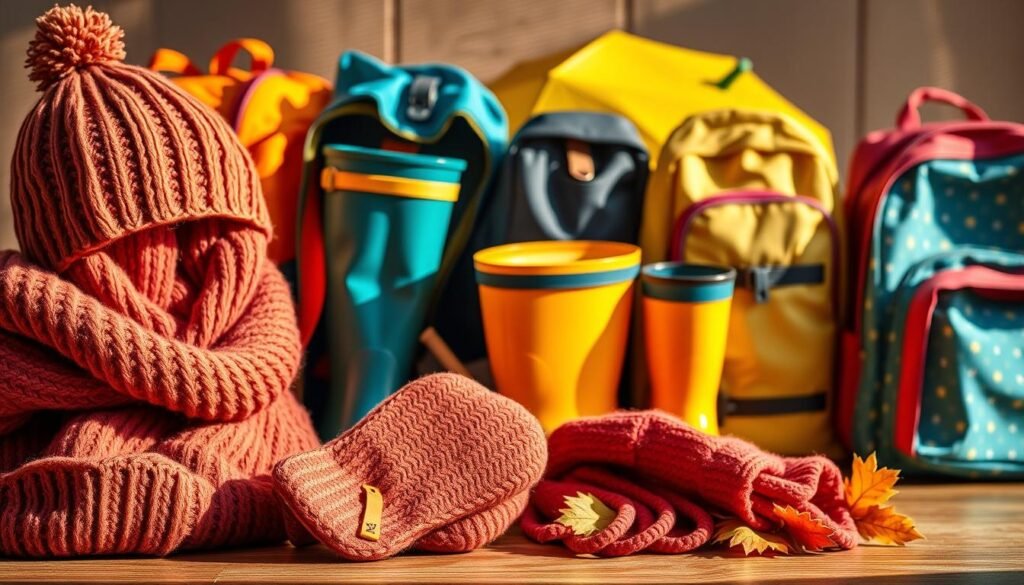
I’ll never forget the first time I dropped my baby off at daycare. My hands shook as I handed over a half-packed bag, realizing I’d forgotten extra clothes and their favorite comfort toy. That chaotic morning taught me one thing: preparation isn’t just practical—it’s emotional armor for both parent and child.
Over time, I’ve learned that a well-organized system saves sanity. Most childcare experts recommend separating supplies into weekly basics (like diapers and backup outfits) and daily must-haves (think snacks or sunscreen). This split keeps the load manageable while ensuring your little one has what they need.
Unexpected messes? They’re guaranteed. I’ve had days where my toddler needed three outfit changes before noon. That’s why my go-to checklist includes stain remover wipes and a waterproof bag for soiled clothes—trust me, daycare providers notice these details!
Creating this routine didn’t just help my family—it transformed our mornings from frantic scrambles into smooth send-offs. Now I’m sharing hard-won wisdom from other parents and childcare pros to help you feel equally confident.
Key Takeaways
- A detailed checklist prevents forgotten essentials
- Separate weekly and daily supplies for easier management
- Always prepare for spills, leaks, and surprise messes
- Expert tips combined with real parent experience create the best system
- Organization impresses caregivers and builds trust
- Proper prep turns chaotic mornings into calm routines
- First-time parents benefit most from a tested strategy
Understanding Daycare Packing Essentials
Mastering daycare prep starts with one simple tool: a foolproof checklist. After showing up with mismatched socks and no spare pacifier twice, I realized winging it wasn’t working. Childcare experts agree—strategic organization prevents daily panic and builds trust with caregivers.
Why a Comprehensive Packing List Matters
My lightbulb moment came when our provider complimented my labeled bins. Separating weekly stash items (like crib sheets and bulk wipes) from daily rotation gear cuts morning chaos. Think of it like meal prepping—you’re setting up future-you for success.
The Difference Between Weekly and Daily Supplies
Here’s what stays at the facility all week:
- Extra sleep sacks
- Sealed backup outfits
- Reusable mess bags
Daily bags get refreshed each morning with:
- Season-appropriate clothes
- Medications (with dosage notes!)
- Current favorite snacks
Labeling everything with my child’s name became a game-changer. Our daycare once mixed up two Sophia’s allergy meds—now I use bright tags and permanent markers. This system isn’t just about stuff—it’s about creating calm transitions for your little one and earning gold stars from busy caregivers.
Preparing Your Weekly Daycare Bag

Tuesday mornings became my nemesis until I discovered the magic of a dedicated weekly supply stash. Leaving bulk items at the facility cuts daily stress and creates a safety net for unpredictable moments. Our provider once texted, “We’re down to the last diaper—got extras?” That’s when the lightbulb clicked.
Essential Items to Leave at Daycare All Week
Think of your weekly bag as a mini warehouse. These supplies stay put for easy access:
| Item | Quantity | Purpose |
|---|---|---|
| Diapers | Full pack | Daily changes + emergencies |
| Wipes | 2 refill packs | Messy faces & surprise blowouts |
| Backup outfits | 3 sealed sets | Spills or art project casualties |
| Bibs | 5+ | Meal times & drool control |
I check supplies every Friday during pickup. A quick peek tells me if we need more sleep sacks or diaper cream. Bright labels prevent mix-ups—I use neon tags with my child’s name and allergy alerts.
This system saved me when work ran late last month. Knowing extra bottles and formula waited at the center let me breathe easier. Caregivers appreciate the organization too—it shows you respect their time and space.
Daily Must-Haves: what to pack for daycare
The morning scramble taught me that smart organization beats frantic searching every time. My system revolves around three principles: pre-measured portions, labeled everything, and backups for backups. Caregivers once returned a mystery bottle—now I use waterproof tags on all items.
Clothing, Diapers, and Wipes
Three outfit changes live in my go-bag after a spaghetti incident required emergency pants. Here’s what never leaves my daily kit:
| Item | Quantity | Pro Tip |
|---|---|---|
| Onesies/Shirts | 3 | Stain-resistant fabrics |
| Diapers | 5+ | Size up for growth spurts |
| Wipe Pouch | 1 | Refill from weekly stash |
| Plastic Bags | 2 | Sealable for messy clothes |
I tuck a travel-size diaper cream in the front pocket. For babies with sensitive skin, include a note about preferred brands.
Feeding Supplies and Emergency Medications
Pre-measured bottles became my secret weapon. Our center requires breast milk in dated containers or formula mixed fresh daily. I use color-coded lids for different feeding times.
My emergency kit includes:
- Children’s antihistamine (pharmacy-labeled)
- Sealed pacifier in hard case
- Single-dose pain reliever packets
A teacher once texted, “We found Sophia’s backup sweater—thanks for the name tag!” That’s when I knew my labeling obsession paid off. Now I use iron-on labels for clothes and dishwasher-safe stickers for bottles.
Feeding, Health, and Comfort Essentials

Balancing nutrition and comfort transformed my approach to daycare prep. After a week of forgotten snacks and tearful drop-offs, I realized meals and emotional support need equal attention. Now my system prioritizes both belly and heart.
Health Items and Safety Tips
My health kit includes more than bandages. Caregivers appreciate pre-measured medications with dosage charts taped to bottles. A travel thermometer and hypoallergenic wipes live in the front pocket for quick access.
For allergy management, I use bright red labels on epi-pens and snacks. Our provider once said, “Your clear instructions prevented a reaction during snack time.” That validation made the extra prep worthwhile.
Comfort Objects and Personal Touches
A mini teddy from home stays clipped to my child’s bag. I’ve watched them clutch it during goodbye hugs—it’s like carrying a piece of security. Some parents add laminated family photos or scent-infused loveys.
Hydration matters too. I pack a spill-proof water bottle and two pre-portioned snacks approved by our center. Crunchy veggie sticks and cheese cubes survive even the roughest backpack rides.
Practical Labeling and Organization
Every item wears a name tag—even spoons. My favorite hack? Color-coded dots on bottle lids show milk versus water. Bibs and burp cloths get initial stickers that survive daily washes.
This system isn’t just for me. Caregivers quickly locate emergency cream or allergy alerts when labels pop. One text made my day: “Your organization helps us focus on cuddles, not clutter.”
Outdoor, Seasonal, and Extra Items for Daycare

Weather threw me a curveball last spring when my toddler came home soaked from unexpected rain. That day taught me: seasonal prep isn’t optional. Now I treat our daycare bag like a Swiss Army knife—ready for anything Mother Nature serves up.
Weather-Appropriate Gear and Accessories
I keep a rotation of climate-specific items in our bag. Summer means sunscreen sticks and wide-brimmed hats, while winter demands thermal mittens and fleece-lined boots. Caregivers often remind parents: “If they can’t play outside comfortably, everyone feels it.”
| Season | Essential Items | Pro Tip |
|---|---|---|
| Summer | UV-protective clothing, cooling towel | Freeze water bottles overnight |
| Winter | Insulated snowsuit, hand warmers | Use mittens with wrist straps |
| Rainy | Waterproof boots, compact umbrella | Pack extra socks in sealed bags |
Additional Extras for a Smooth Day
My secret weapon? A clear plastic case holding travel-size sunscreen and lip balm. It clips to the bag’s exterior for quick swaps between seasons. I always include two spare outfits—one for weather changes, another for messy play.
Labeling becomes crucial with seasonal layers. I use iron-on tags inside jackets and waterproof stickers on rain boots. Last month, a teacher texted: “Found Max’s missing hat instantly—your labels are lifesavers!”
These extras do more than prevent meltdowns. They build trust with caregivers who see you’ve anticipated needs before they arise. Now our transitions between home and daycare feel like a well-rehearsed dance, not a chaotic scramble.
Conclusion
Watching my little one thrive at daycare confirmed something important—success starts with a solid system. This guide’s strategies transformed chaotic mornings into smooth routines. Separating weekly supplies from daily essentials means fewer forgotten items and more confidence during drop-offs.
Remember those bright labels? They’re game-changers. Caregivers quickly spot allergy alerts or find extra clothes during messy moments. Seasonal swaps matter too—rotate sunscreen for snowsuits as weather shifts, keeping your baby ready for anything.
First-time parents, breathe deep. My early mistakes taught me that preparation builds trust with providers. When they see labeled bottles and organized formula portions, they know your child’s needs are prioritized.
Revisit your checklist monthly. Add comfort items like a favorite stuffed animal or extra burp cloths. Small tweaks keep your system fresh as your little one grows. You’ve got this—every labeled item and pre-packed bag creates calmer days for everyone involved.

Leave a Reply